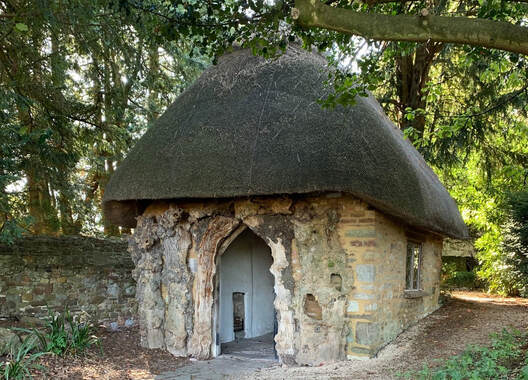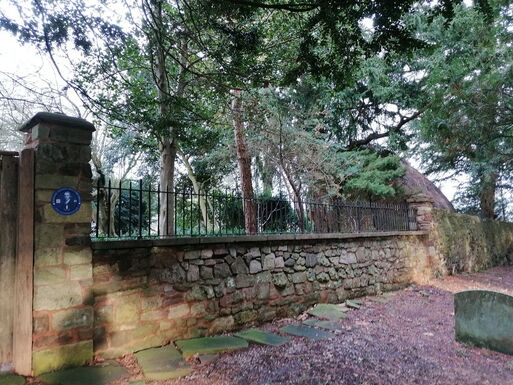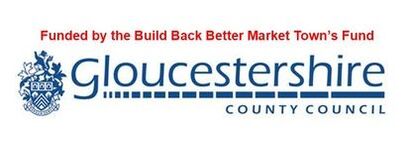Edward Jenner Heritage Trail - Location 10
Temple of Vaccinia, Dr Jenner’s House and Garden Museum
This picturesque shelter was commissioned by Jenner as a summerhouse, sometime in the late 1790s, as a focal point for the garden with views to Stinchcombe Hill. The design was by his friend, the Reverend Robert Ferryman (c1753-1837). Its thatched roof and frontage of tree bark emulates the picturesque style of the garden. It is built of brick and rubblestone, has part of a brick stack on the west wall and is grade II* listed. Historic England classify it as one of the top ten places in England that tell the story of scientific development. This picturesque shelter was commissioned by Jenner as a summerhouse sometime in the late 1790s, as a focal point for the garden with views to Stinchcombe Hill.
Jenner is reputed to have carried out the first ever vaccination in this building in 1796 when he transferred matter from the arm of milkmaid Sarah Nelmes (who had previously contracted cowpox) into that of James Phipps thus demonstrating that cowpox could be transferred from person to person. Later in his life, when the practice of vaccination to prevent smallpox infection was more established, he used the hut to vaccinate members of the parish for free making this hut the world’s first vaccination centre.
According to Jenner's biographer John Baron (1838), it been ‘converted into a place of utility’ by 1804 which Jenner playfully named of 'The Temple of Vaccinia', because like a ‘faithful priest’ he always hoped to find it full of ‘worshippers’, in this case the local children awaiting inoculation. John Baron continued by writing that, ‘wonders were wrought’ as Jenner protected the poor from a lethal disease.
Return to the Bell Tower and turn right carring on through the Churchyard Gate. Follow straight on along Church Lane, for 100 yards, round the bend in the road and arrive at Location 11, the gate of Dr Jenner's House Museum and Garden. The Museum is visible straight ahead from the gate. See sign for opening times and entry charge. During the period when the Museum is closed, visitors can access further information at https://jennermuseum.com/
Jenner is reputed to have carried out the first ever vaccination in this building in 1796 when he transferred matter from the arm of milkmaid Sarah Nelmes (who had previously contracted cowpox) into that of James Phipps thus demonstrating that cowpox could be transferred from person to person. Later in his life, when the practice of vaccination to prevent smallpox infection was more established, he used the hut to vaccinate members of the parish for free making this hut the world’s first vaccination centre.
According to Jenner's biographer John Baron (1838), it been ‘converted into a place of utility’ by 1804 which Jenner playfully named of 'The Temple of Vaccinia', because like a ‘faithful priest’ he always hoped to find it full of ‘worshippers’, in this case the local children awaiting inoculation. John Baron continued by writing that, ‘wonders were wrought’ as Jenner protected the poor from a lethal disease.
Return to the Bell Tower and turn right carring on through the Churchyard Gate. Follow straight on along Church Lane, for 100 yards, round the bend in the road and arrive at Location 11, the gate of Dr Jenner's House Museum and Garden. The Museum is visible straight ahead from the gate. See sign for opening times and entry charge. During the period when the Museum is closed, visitors can access further information at https://jennermuseum.com/


